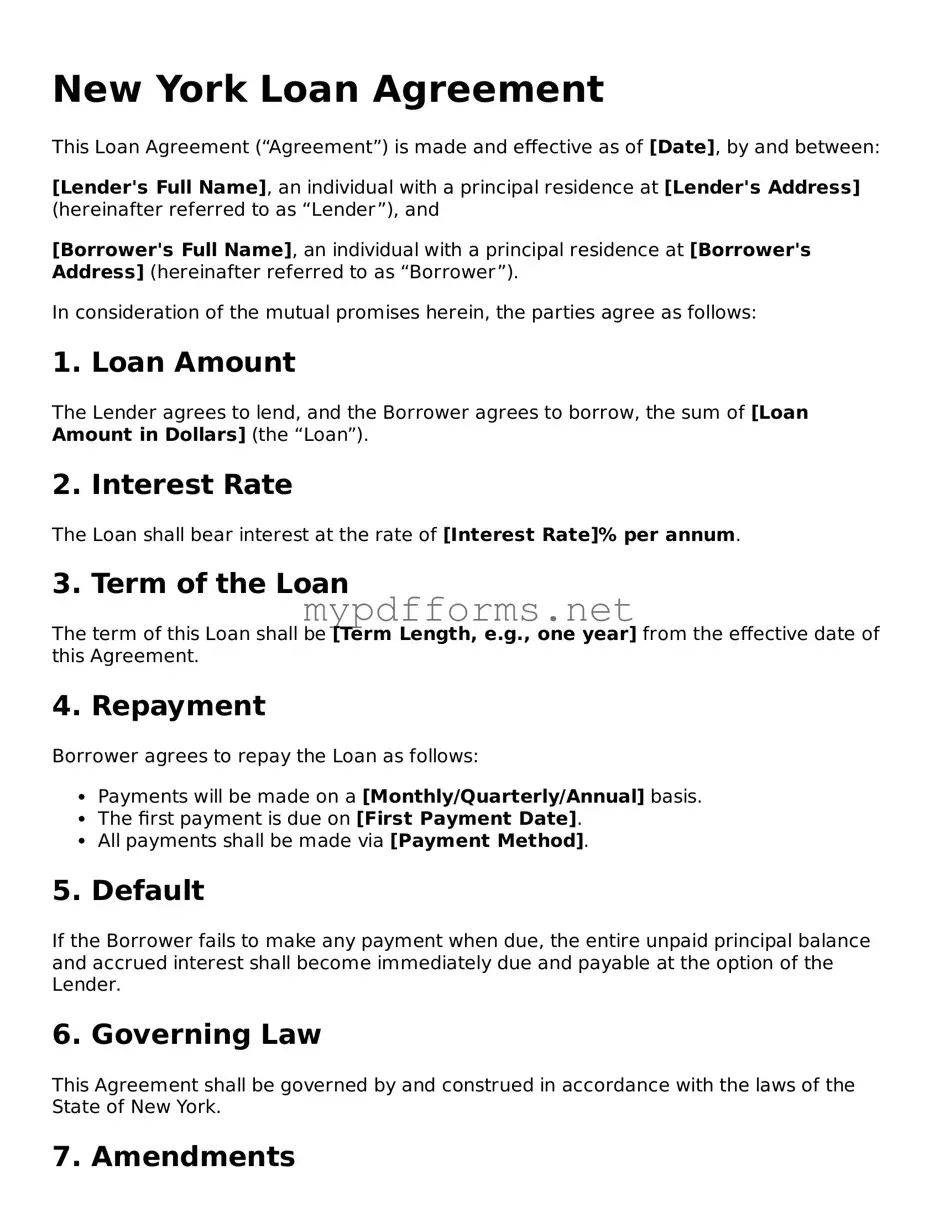The Promissory Note is a document that outlines the borrower's promise to repay a specified sum of money to the lender. Similar to the New York Loan Agreement, it includes details such as the loan amount, interest rate, and repayment schedule. However, the Promissory Note is more focused on the borrower's obligation, while the Loan Agreement encompasses broader terms and conditions, including any collateral involved and the responsibilities of both parties.
The Security Agreement serves to establish a lender's interest in specific collateral provided by the borrower. Like the New York Loan Agreement, it details the terms under which the collateral can be seized in the event of default. The key difference lies in the Security Agreement's primary focus on the collateral itself, whereas the Loan Agreement covers a wider range of contractual obligations between the borrower and lender.
The Loan Disclosure Statement is a document that provides borrowers with key information about the loan terms, including fees and interest rates. This document is similar to the New York Loan Agreement in that it aims to ensure transparency and informed consent. However, the Loan Disclosure Statement is typically more concise and focuses primarily on the costs associated with the loan, rather than the comprehensive terms of the agreement.
The Mortgage Agreement is a specific type of loan agreement used in real estate transactions. It outlines the terms of the loan and the borrower's obligations while securing the loan with the property itself. Like the New York Loan Agreement, it includes terms related to repayment and interest. However, the Mortgage Agreement is unique in its emphasis on the property as collateral, making it a more specialized document within the realm of loan agreements.
The Loan Modification Agreement is used when the original terms of a loan need to be changed, often due to financial hardship. Similar to the New York Loan Agreement, it requires the consent of both parties and details the new terms of repayment. The key distinction is that the Loan Modification Agreement is an amendment to an existing agreement, while the Loan Agreement is a standalone document that establishes the initial terms of the loan.
The Forbearance Agreement is a temporary arrangement between a lender and borrower that allows the borrower to pause or reduce payments for a specific period. This document is similar to the New York Loan Agreement in that it outlines the terms and conditions agreed upon by both parties. However, the Forbearance Agreement specifically addresses situations where the borrower is experiencing financial difficulties, providing a short-term solution rather than establishing a long-term loan structure.
When dealing with property transfers, understanding the various legal documents is crucial, and a Texas Quitclaim Deed serves as an important tool in this process. This deed allows for the transfer of ownership without the complexities of guaranteeing the property's title, making it a popular choice for familial or friendly transactions. Should you need assistance with drafting this essential document, you can find a fillable form at https://quitclaimdocs.com/fillable-texas-quitclaim-deed/.
The Personal Guarantee is a document that holds an individual personally liable for a business loan. It is similar to the New York Loan Agreement in that it involves a commitment to repay a debt. However, the Personal Guarantee focuses on the personal assets of the guarantor, ensuring that the lender has recourse if the business defaults. This adds an additional layer of security for the lender beyond what is typically included in a standard loan agreement.
